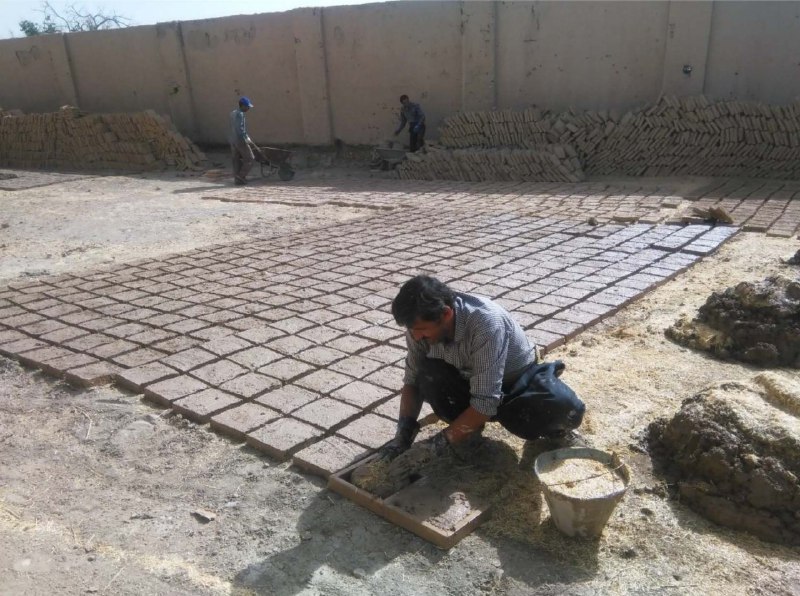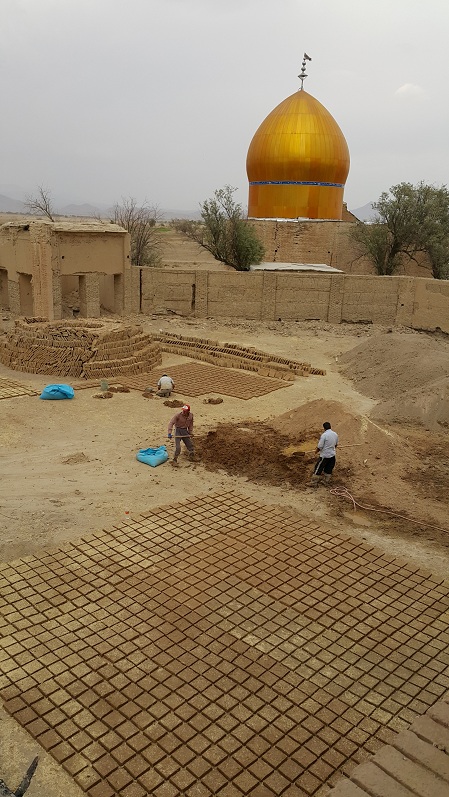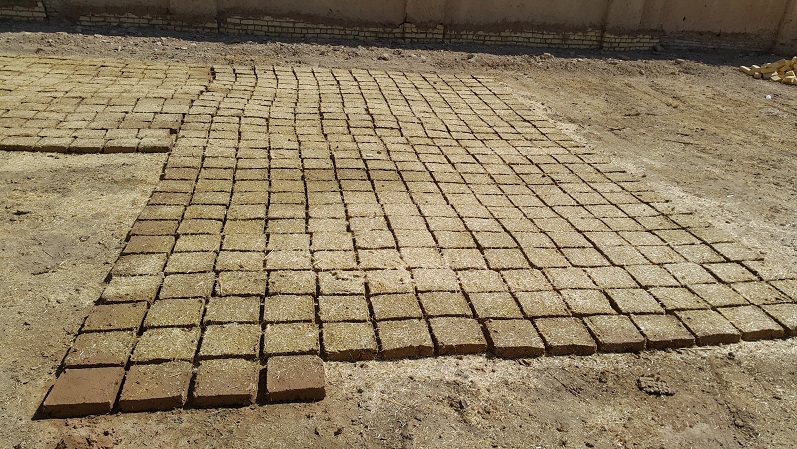Mudbrick molding in the Iranian culture
Molding mudbricks is an ancient tradition of the Iranian people in the rural regions in the days long past. Dehkohda Dictionary of the Persian Language defines “mudbrick molding” as follows:
To put a block of mud in the mold and let the resulted bricks dry under the sun in order to use them in masonry.
Mudbrick molding also found its way into the Persian culture and literature; Sa’di, the famous 13th century poet, says:
I swear to thine fidelity, should they “mold mudbricks” of my soil,
There they would found in my heart thy love and fidelity.
Or:
My benevolent friends tend to advise me,
Not knowing “molding mudbricks” into the sea is vanity.
In the poem, Sa’di refers to the saying “molding mudbricks into the sea” which, figuratively speaking, denotes a vain attempt.

In the past when construction material such as cement blocks, fired bricks and pre-fabricated walls were nonexistent, mudbricks, especially in the arid heartland of the country, served as the main ingredient of the construction material in Iran.
Mudbricks are made of a mixture of clay, straw, wheat chaff and water. Soil containing clay is mixed with straw, and then water is added to the mixture. The resulting mass is tramped or kneaded 24 hours later to produce some sort of paste. Then, the paste is put into wooden molds which normally are 300 mm in width and length, and 70 mm deep. Dried under the sun, the resulting rectangular mudbricks are used in construction. Straw, as a binder, is added to the mixture to enhance its resistance since without straw the mudbricks would crack and be rendered useless.
Molding mudbricks may seem a simple job, but this simple job is in fact the best way to take advantage of the material available in the environment. Turning mud into bricks fortifies a building’s resistance, permitting more exotic designs in the architecture. Furthermore, mudbricks make it possible to add two or three stories to the building. Also, mudbricks are easier to transport and less expensive than other material of the sort.
Many buildings in ancient Iran were made of adobe, the most significant of which are the historical buildings in Yazd, and most famously, the Arg (citadel) of Bam, dating back more than 2 millennia. Sadly, the Arg was severely damaged by the earthquake in 2003.
ارگ میشیجان
The Arg of Mishijan is another historical building mainly made of adobe. The building, dating back to the Qajarid era and built on an octagonal ground, is a 10-meter high, two-storied structure. All the surrounding walls and the main facility are made of adobe. Some walls are 2 meters thick which makes them function as an insulator, keeping the rooms warm during winters and cool in summers.
Fortunately, this charming building, considerably damaged in the past years, has undergone some reconstruction since August 2014, and is anticipated to admit visitors in 2016.
video of preparing mudbrick molding
By: Ali-Muhammad Panahi




